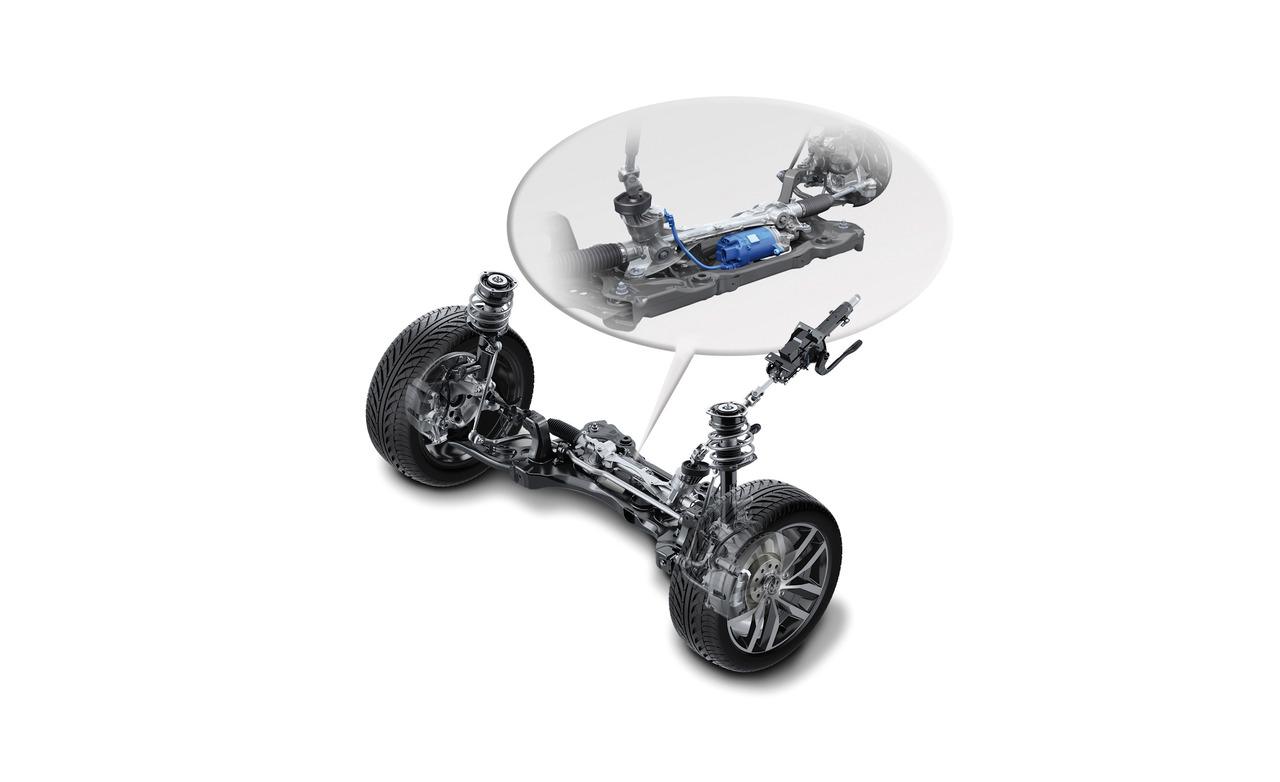Power Steering System is designed to ensure an easy handling and precise direction as you drive your vehicle. In order to understand this question, first of all, you’ll need to learn something about power steering. The main components of power steering include power steering pump, power steering fluid, steering rack, speed sensor, steering wheel and tire rod.
How does the Power Steering System work?
As you steer your vehicle, its power steering system assists you by directing part of the engine’s power toward one front wheel or the other.
Most power steering systems rely on a hydraulic system to turn the vehicle’s wheels. The power steering pump is a rotary hydraulic pump that is driven by a belt from the main pulley of the engine at about twice the engine speed. This pump circulates highly pressurized power steering fluid toward the steering rack located under the vehicle between the front wheels. The power steering fluid is designed to withstand about 1200 lbs. of pressure without breaking down or foaming.
The speed sensor is attached to the transmission and senses the vehicle speed, determining the degree of assistance to be provided by the system: as speed increases, assistance decreases, up to 35 mph when there is no assistance provided; when speed decreases, the system provides increasing assistance until the vehicle has stopped.
When turning the steering wheel toward left or right the pressurized fluid is directed to that side inside the steering rack to reach the tie rod located at this extremity of the rack.
Usually, power steering failure happens gradually and gives warning signs before failing completely, but it is possible for this system to fail suddenly, even if they are properly maintained. No one wants to drive a car that suddenly encounters power steering failure. It is annoying enough and also dangerous. Here are some common signs warning you of a potential power steering failure.
Power Steering Failure Warning Signs
1.Listen for noises when you turn the steering wheel. If you hear a whining, moaning or shrieking sound, your power steering system pump could be seriously low on fluid.
2.Notice how freely the steering wheel turns. Normally, you should be able to turn the steering wheel with little effort whenever you want to steer the car into a curve or around a corner. If you find it a major effort to turn the steering wheel to turn the car, your power steering system is going out.
3.Check for power steering fluid leaks. If you notice a stain on the ground under your car when it sits for a long period, fluid may be leaking from your car. If the stain appears amber, pink or red, it may be power steering fluid.
If you have trouble figuring out what color the stain is, place a sheet of white butcher paper under your car when you leave it parked for several hours. The color will be easier to see against a white background.
Keep reading for detailed instruction on how to handle sudden power steering failure if it happens to you.
Handling Sudden Steering Failure
1.Warn other drivers. If your power steering fails while you are moving at high speed, your first instinct will be to panic. Instead, turn on your flashers and honk your horn to let other drivers know you are having sudden car problems. This will cause them to get out of your way.
2.Move toward the side of the road. Do this as carefully as you can; without power, it will be much harder to steer your car.
3.Bring the car to a gradual stop, slowing the car gradually. Slamming the brakes may throw the car into a skid that would be difficult to steer out of with power steering and almost impossible to steer out of without it.
If your car’s power steering goes out because of the engine stalling, your brakes will feel stiffer if you have power brakes, forcing you to hit the pedal harder and depress it lower than normal. You may also have to downshift to a lower gear or use the friction of a guardrail, gravel shoulder or cement divider to slow the car enough for the brakes to do the rest.
4.Restart the engine if it stalled. Turn the steering wheel in either direction to see how well it turns. If it turns as freely as usual, pull back onto the roadway and continue driving as normal. If it doesn’t, either drive slowly to the nearest mechanic or call for a tow truck.
If your car steering fails and you don’t want to entrust the problem with repair shop but you don’t know where to look for, you can always turn to professinal diagnostic tools. People are unwilling to say that machines are more relaible than humans. However, it is this case in many situations proven by facts. For the professional tool, you can either search youself for the appropriate one on our website www.autointhebox or you can have a look at MaxiCheck Pro by clicking the below product image.MaxiCheck Pro is specially developed by Autel to work on steering system. It can perform various tasks related to steering diagnostics.

Does car power steering really suddenly fail to respond?
by
Tags:
